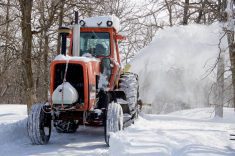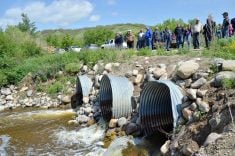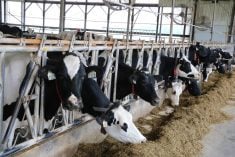Manitoba farmers in the Red River and Assiniboine River basins will see low to moderate risk of flooding the spring, according to the province’s most recent flood outlook.
Manitoba Infrastructure and Transportation’s Hydrologic Forecast Centre released its outlook Feb. 28. The report also advised of a moderate flood risk in the Interlake region along the Fisher and Icelandic rivers.
The risk of spring flooding is generally low along the Souris, Roseau, Rat and Pembina rivers.
However, the predictions are based on average precipitation in coming weeks.
Read Also

Boosting productivity could mean historic farm revenues
FCC report finds increasing productivity in the Canadian agriculture sector could mean $30 billion in farm revenue in the next decade
The report notes these predictions are preliminary and that spring flood risk is largely dependent on weather conditions from now until the spring melt.
Though not very reliable, long-range forecasts point to near-normal precipitation throughout the province.
Ice cutting and breaking is underway on the Red River north of Winnipeg and expected to be completed by March 14. Ice-cutting and breaking work on the Icelandic River is scheduled to start March 17.
Similar work is not being undertaken this spring on the Assiniboine River, along the Portage Diversion, due to a lower risk of ice jam-related flooding.
Winter precipitation has been generally below normal in most central and southern Manitoba basins, with the exception of southeastern Manitoba, which has received near-normal precipitation.
Winter precipitation has been normal to above normal throughout northern Manitoba basins, including the Saskatchewan and Churchill River basins. The United States portions of the Red River and Souris River basins have also received normal to above-normal precipitation since Nov. 1.
Base flows and levels (the amount of water available in the system prior to spring runoff) have been gradually declining in most rivers since the fall and are generally near normal to above normal in most Manitoba basins. Higher base flows indicate higher soil saturation levels and higher spring runoff potential.
The frost depth is variable across the watersheds but is generally considered normal to shallower than normal throughout most of the province due to warmer than normal winter temperatures. Soil frost depth affects the amount of surface water that infiltrates the soil. Deeper soil frost contributes to higher surface runoff.
The centre also reports that operation of the Red River Floodway is expected this spring under unfavourable future weather conditions to reduce water levels within the city of Winnipeg, with some operation of the Portage Diversion also anticipated to prevent ice jamming on the Assiniboine River.
The full report can be found on the Manitoba government website.















